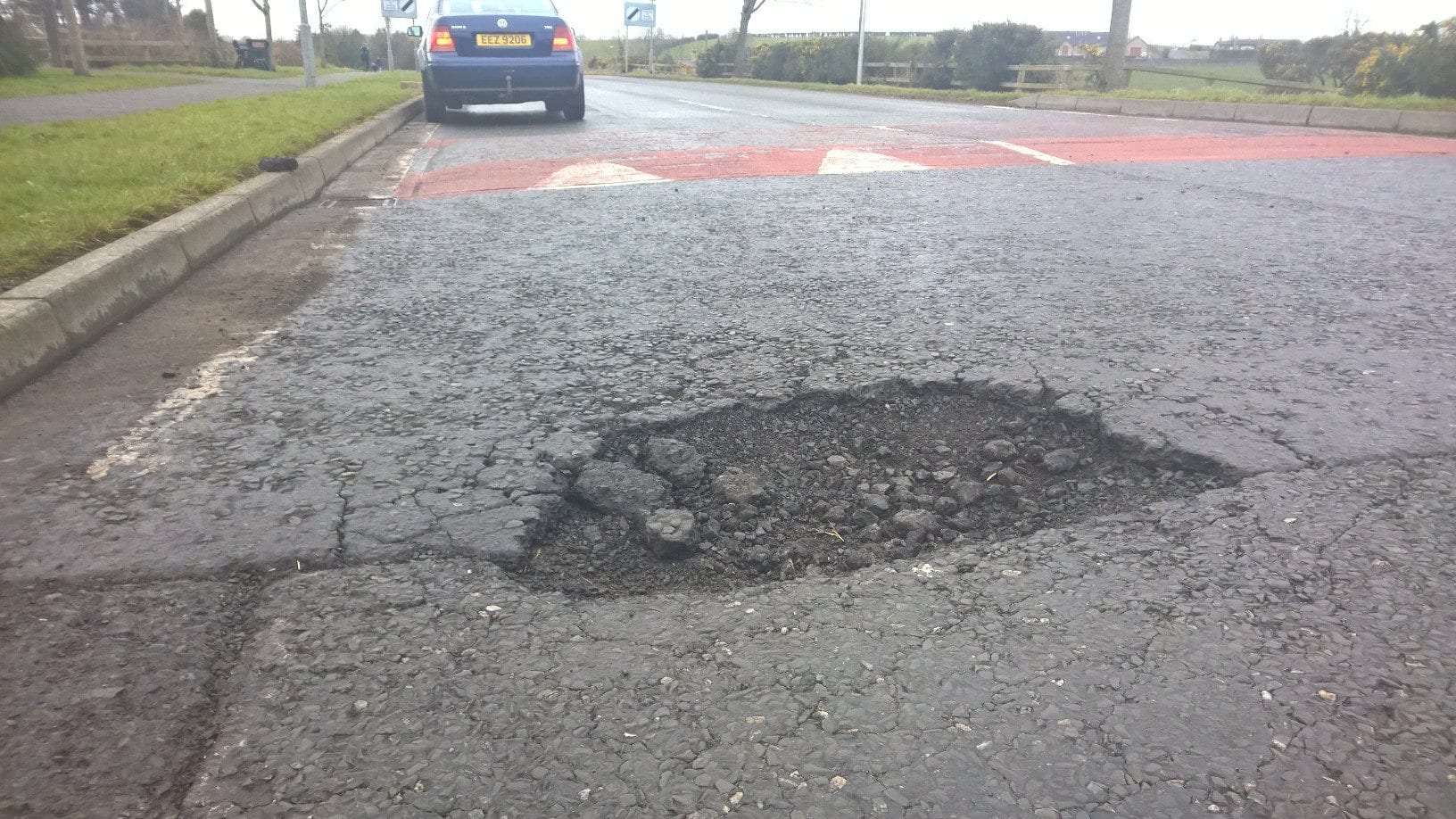
Sustaining currently levels of road maintenance over the next 12 months will be “unlikely”, Council have been informed.
Divisional Roads Manager Simon Richardson, addressing councillors on Monday night, cited a serious lack of funds, which he says “falls well short of meeting our needs”.
He told councillors that work on the road network “will be problematic, given its continuing deterioration and increases in raw material costs”.
Mr Richardson highlighted the work carried out in the borough over the past year.
“A number of significant resurfacing schemes have been completed,” he said. “Including A3 Monaghan Road, Armagh, Kiln Road, Lurgan, A3 Portadown Road, Armagh and the A26 Main Street, Waringstown.
“Other schemes include A76 Lough Road, Lurgan, Ashgrove Road, Portadown and the A28 Newry Road, Armagh.
“In addition, work was completed at Bells Hill, Annaclone, Lisnaward Hill, Banbridge, Laurelhill Road, Donaghcloney, Church Street, Middletown, Granemore Road, Keady Alexander Drive, Lowtown Road and Acton village as part of the roads recovery fund which addresses roads in immediate need of repair.”
Mr Richardson also advised that the Network Development scheme for the provision of a dedicated right turn lane into the Tandragee Road junction from the A28 Gosford Road and a two lane exit from Tandragee Road onto the A28 has been completed.
This scheme will improve both traffic progression and road safety. Other recently completed schemes include a new part time 20mph speed limit at St. Mary’s Primary School, Gawleys Gate and a new Toucan crossing on Moy Road, Scotch Street, Portadown.
These projects will provide widespread benefits to both the local community and enhance provision for all those walking and cycling, as well as those using roads in the Armagh, Banbridge and Craigavon Borough Council area.
Mr Richardson continued: “The Department continues to face significant Resource and Capital budget challenges. Since 2013 the Department has relied on in year funding to deliver core services including public transport and winter gritting.
“This continues to be the case for 2019-20. Our allocation falls well short of meeting our needs. It should enable the maintenance of drinking water and sewerage networks, but the continued provision of public transport services, particularly maintenance of the railway infrastructure will be challenging.
“Similarly the maintenance of the road network will be problematic, given its continuing deterioration and increases in raw material costs.
“Maintaining current levels of routine road maintenance, which were dependent on in-year funding in 2018-19, will be unlikely.
“In Capital the 2019-20 allocation to the Department represents a reduction from the previous year. Almost 70% of this budget is taken up with committed or priority projects, leaving insufficient budget to meet the Department’s responsibilities as custodian of some £40billion of public assets; the Water and Sewerage network and the Roads and Public Transport systems.
“With the remaining funds, we will have to strike a balance between maintaining existing infrastructure in water and sewerage, the road network and public transport and new development, particularly in pursuit of the draft Programme for Government outcomes.
“Independent advice suggests that an investment of some £400million per year is needed to safeguard these assets, more than double what the Department has available.
“Recent independent reports highlight that funding for roads maintenance has been below the level required for some time.
“Therefore, funding for structural maintenance will remain similar to last year and will again include a ‘Roads Recovery Fund’ which gives flexibility to target those roads which have been adversely impacted by recent under funding.
“While this will enable the Department to plan to deliver a reasonable programme of resurfacing schemes in the Armagh, Banbridge and Craigavon Borough Council area, funding for other programmes, such as Local Transport and Safety Measures and Street Lighting column replacement, will not be at the same level.
“The allocation for routine maintenance which is also similar to last year, means that we can deliver two grass cuts, a single gully clean across the network and the intervention level for potholes on lightly trafficked roads remains at 50 millimetres.”






